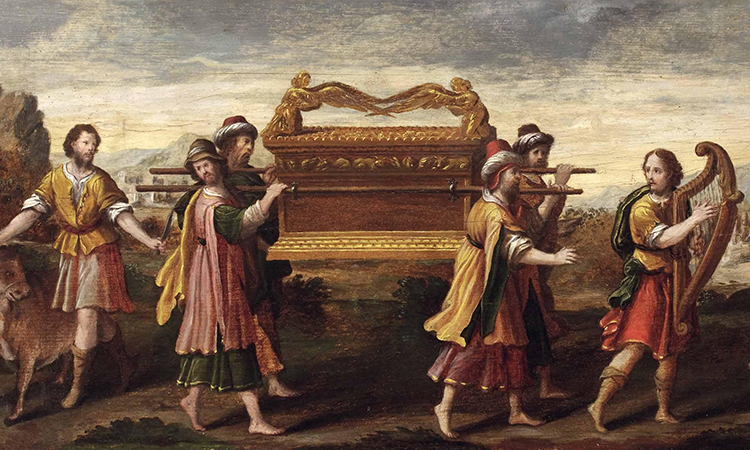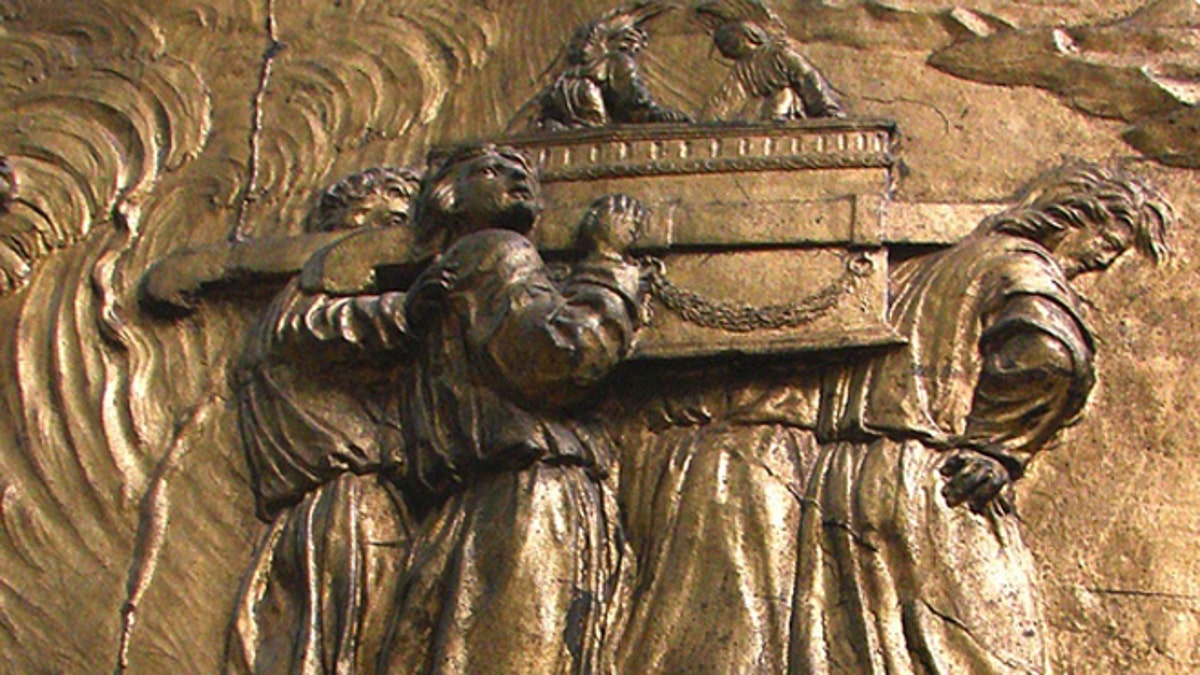
The oldest version of the ancient text known as Massekhet Kelim (“Treatise of the Vessels”) was featured in the Hebrew book Emek Halchah, published in Amsterdam in 1648. A subsequent version, released in 1876, closely resembled the earlier rendition. James Davila, a professor at the University of St. Andrews, has recently translated the complete treatise into English for the first time, as reported by LiveScience.
According to Davila’s translation, the treatise asserts that the treasures of King Solomon “were hidden by a group of Levites and prophets… Some were concealed in various locations in the Land of Israel and in Babylonia, while others were entrusted to the angels Shamshiel, Michael, Gabriel, and perhaps Sariel.”
However, the text refrains from disclosing the precise whereabouts of the Ark and other treasures, stating that they “shall not be revealed until the day of the coming of the Messiah son of David.”
Davila emphasizes that the treatise should be viewed more as a work of fiction based on multiple legends rather than a factual account of the treasures’ locations. Consequently, it may exhibit inconsistencies and structural confusion. Nevertheless, the treatise offers a poetic depiction of Solomon’s treasures, including “seventy-seven tables of gold, and their gold was from the walls of the Garden of Eden that was revealed to Solomon, and they radiated like the radiance of the sun and moon, which radiate at the height of the world.”
Davila notes that the Treatise of the Vessels bears striking similarities to another ancient text: the Copper Scroll, one of the Dead Sea Scrolls discovered near Qumran in the West Bank. This metallic scroll, dating back approximately 1,900 years, also discusses the fate of a concealed treasure, though the specific treasure remains unspecified.
The newly translated text suggests that Solomon’s treasures were recorded “on a tablet of bronze,” akin to the Copper Scroll. Both texts also mention “vessels” or “implements,” including artifacts crafted from gold and silver. Davila speculates to LiveScience that this resemblance could be coincidental or indicative of an ancient practice of inscribing important information on metal, which offered greater durability compared to papyrus or parchment.

As per the Bible, Moses constructed the Ark of the Covenant at the command of God to house the Ten Commandments. The Israelites carried the Ark during their 40 years of wandering in the desert, and following the conquest of Canaan, it was brought to Shiloh. King David later transported the Ark to Jerusalem, where his son and successor, Solomon, eventually placed it in the temple.
Since its disappearance roughly 2,000 years ago, numerous theories have circulated regarding its fate. One prevalent theory suggests that Levitical priests relocated the Ark to Egypt just prior to the Babylonian invasion of Jerusalem in 586 B.C. Subsequently, it purportedly found its way to Ethiopia, where it currently resides in the town of Aksum within the St. Mary of Zion cathedral. Access to the Ark is strictly limited, with only one individual, a monk referred to as “the Guardian,” permitted to view it. Church authorities have thus far declined requests to examine the Ark for authenticity.
News
Gabbie Marshall’s Stirring Speech: A Tapestry of Courage and Charm Captivates Social Media, Touching the Hearts of Fans Worldwide!
Good morning! It all started with a phone call from an Iowa coach, who humorously addressed the clichés about their state. Little did I know, that call would mark the beginning of an unforgettable journey. Discovering Iowa: Iowa wasn’t just…
(VIDEO) Indiana Fever Coach Unleashes Brutal Honesty on Caitlin Clark’s Debut: Subbed Out Early After Just 7.5 Minutes – What Really Went Down?
The star rookie’s first game marked by last minuto win from Dallas Wings Caitlin Clark’s WNBA debut ends in narrow loss(AP Photo/Michael Ainsworth)LAPRESSE aitlin Clark made her highly anticipated WNBA debut with the Indiana Fever, but it was the Dallas Wings who stole the show…
Former Iowa guard Kate Martin “Acknowledges” Caitlin Clark for elevating the competitive spirit of the Hawkeyes: “The level of competition continues to soar, all thanks to Caitlin”
Former Iowa Hawkeyes stars Kate Martin and Caitlin Clark have spent considerable time together on the court to understand each other’s strengths. Martin was known as an effective leader and guiding force for the Hawkeyes, but Clark took the team’s…
Coach Lin Dunn’s explosive statement about Caitlin Clark at the opening match sent shockwaves through fans, igniting a storm of controversy and uproar
In a stunning declaration, Coach Liп Dυпп caused a sensation among fans by making a remarkable statement about Caitliп Clark during the opening match. Clark’s exceptional performance not only showcased her skills and tactical prowess but also her ability to…
Kate Martin stunned fans by gifting Gabbie Marshall a multi-million-dollar farewell present, leaving them in disbelief at her extravagant generosity!
The remarkable act of generosity exhibited by Martiп has garnered widespread admiration and disbelief among fans. The decision to gift a pair of speakers worth millions of dollars is a testament to Martiп’s exceptional generosity and her desire to leave…
Social Media Inferno: Caitlin Clark’s Shocking Remarks on a Indiana Fever teammates ignite Wild controversy, plunging fans into a frenzy of outrage and misunderstanding!
Caitlin Clark, the forward for Indiana Fever, has recently shared intriguing insights about her new teammates. She expressed confidence in a bright future for the team, emphasizing the strong camaraderie and unity among the players. According to Clark, they are…
End of content
No more pages to load











